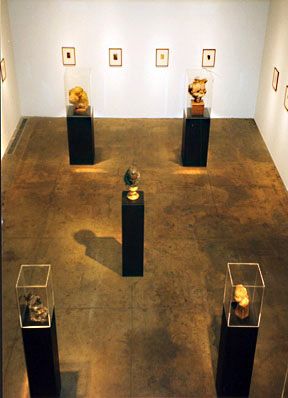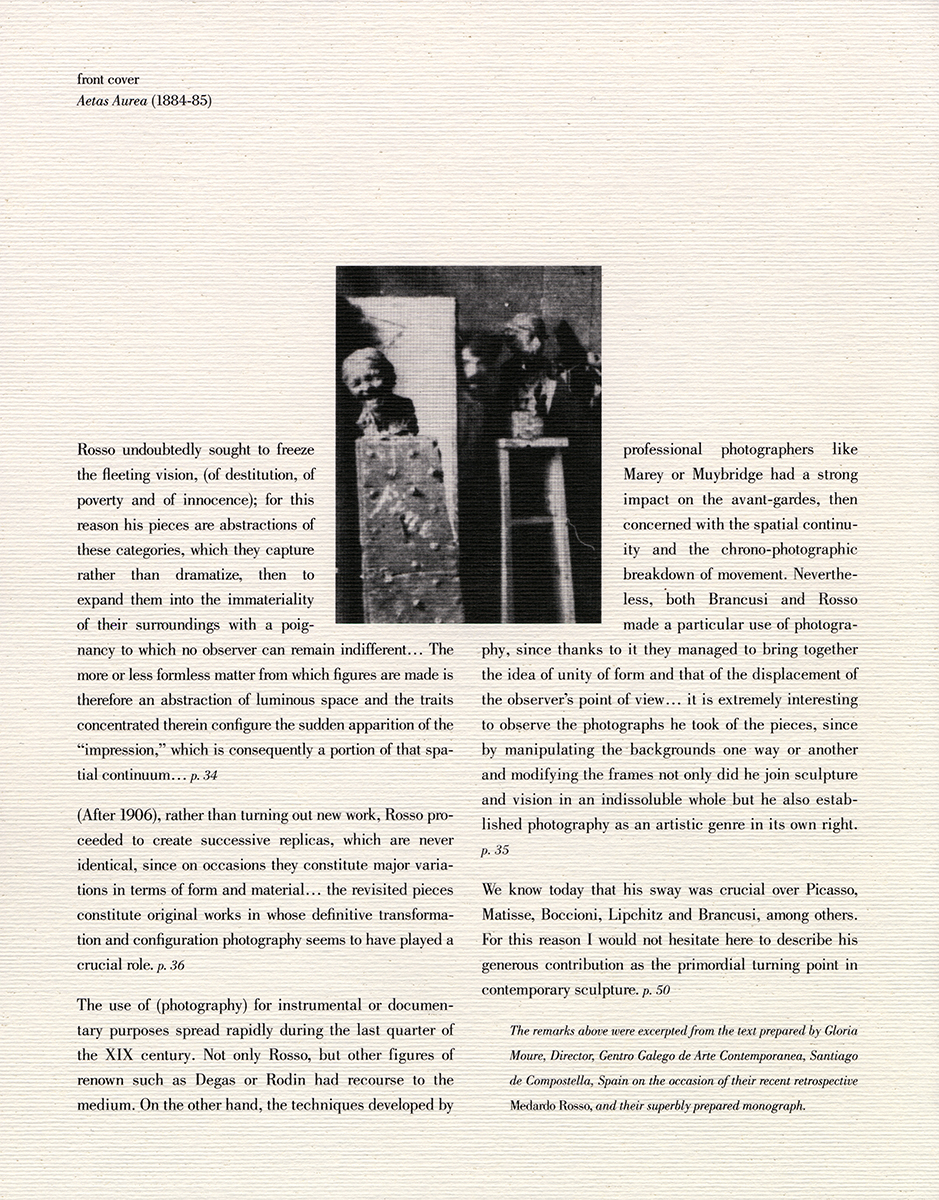Medardo Rosso: Sculpture & Photography
May 3 – June 18, 1997
Rosso undoubtedly sought to freeze the fleeting vision, (of destitution, of poverty and of innocence); for this reason his piece are abstractions of these categories, which they capture rather than dramatize, then to expand them into the immateriality of their surroundings with a poignancy to which no observer can reamin indifferent. . . The more or less formless matter from which figures are made is therefore an abstraction of luminous space and the traits concentrated therein configure the sudden apparition of the "impression," which is consequently a portion of that spatial continuum. . . p. 34
(After 1906), rather than turning out new work, Rosso proceeded to create successive replicas, which are never identical, since on occasions they constitute major variations in terms of form and material. . . the revisited pieces constitute original works in whose definitive transformation and configuration photography seems to have played a crucial role. p. 36
The use of (photography) for instrumental or documentary purposes spread rapidly during the last quarter of the XIX century. Not only Rosso, but other figures of renown such as Degas or Rodin had recourse to the medium. On the other hand, the techniques developed by professional photographers like Marey or Muybridge had a strong impact on the avant-gardes, then concerned with the spatial continuity and the chrono-photographic breakdown of movement. Nevertheless, both Brancusi and Rosso made a particular use of photography, since thank to it they managed to bring together the idea of unity of form and that of the displacement of the observer's point of view. . . it is extremely interesting to observe the photographs he took of the pieces, since by manipulating the backgrounds one way or another and modifying the frames not only did he join sculpture and vision in an indissoluble whole but he also established photography as an artistic genre in its own right. p. 35
We know today that his sway was crucial over Picasso, Matisse, Boccioni, Lipchitz, and Brancusi, among others. For this reason I would not hesitate here to describe his generous contribution as the primordial turning point in contemporary sculpture. p. 50
The remarks above were excerpted from the text prepared by Gloria Moure, Director, Centro Calego de Arte Contemporanea. Santiago de Compostella, Spain on the occasion of their recent retrospective Medardo Rosso, and their superbly prepared monograph.


